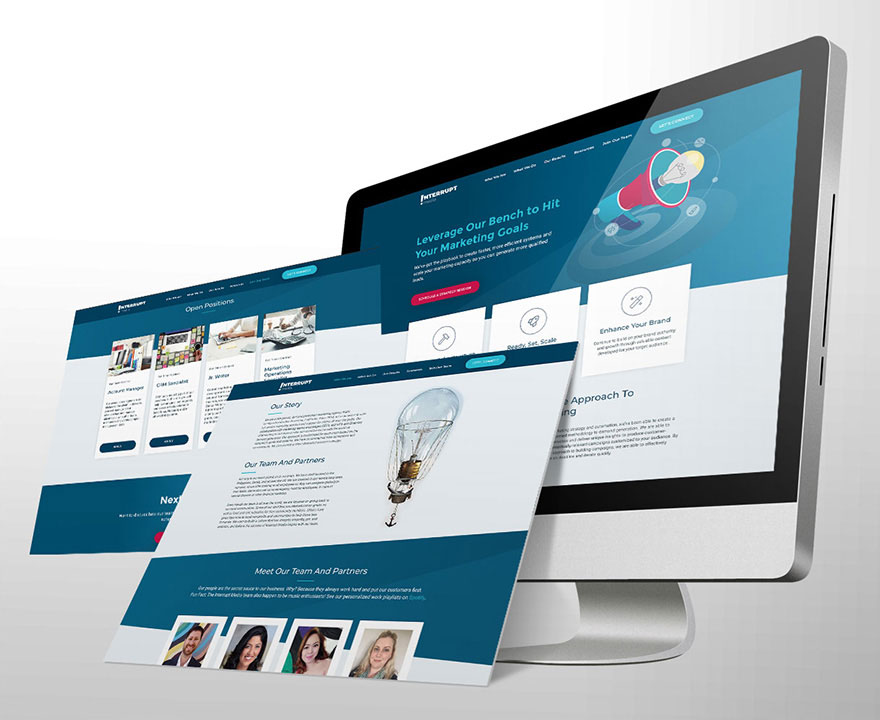Show:
How to Give Your Website a Boost with Visual Content
They say a picture is worth a thousand words. We somehow tend to react to visual stimuli much better than to written or spoken words. This fact has been confirmed by many studies and used by marketing and advertising experts extensively. Since we’re living in the world where digital presence is of crucial importance, it’s clear that your website simply has to carry a great visual appeal. So, what is it that you can do about it?
Photos
Many websites use stock photo sites and opt for those dull pics off people sitting around a business table, engaged in a discussion or looking at a presentation. You might even find the same photo used on several different sites. That’s why you should try to avoid the stock photo clichés. They bore people and won’t help you stand out over your competitors.
Hire a professional photographer

If you want pictures of your products, don’t use your mobile phone and your knowledge of photo-editing software. You want the present your products in the best possible light and the pics really need to be perfect. That means sharp, professional-looking and attractive. That’s why this job is best left to professionals, who will know exactly what to do.
Infographics
One of the best ways to show people what you’re doing and how a complex topic or idea can affect them is definitely to use infographics. It is probably the most efficient method of making your point without having to engage in creating a lengthy text. Designers at Infostarters, for example, can illustrate the content piece you want or provide a visually attractive design based on some research you’ve conducted.
Drawings and diagrams
It’s sometimes very difficult to explain a complex process or product in words, because you would need to write a lot of text in a way that is easy to follow and understandable. That’s where you might find a drawing or diagram invaluable, since they really get the message across in the most efficient way. One look at such a feature and a visitor to your website can easily understand what they are interested in, without having to read a lot of text, i.e. spend much more time.
Graphs

You might consider including graphs when designing your website, since they are also great at illustrating how your product or service can help prospective customers save money over time. Whether you use graphs separately or work them in as a part of an infographic, they will most certainly give your website a boost.
Tables
If you offer a product that has many various features, it is a sound idea to include a table to your website, because tables are used to explain different features in the most understandable way. A reader can also quickly perform a side-by-side comparison or they can immediately find the piece of information they are particularly interested, such as the size of a product.
Visual cues
If you wish to make a section of your website more attractive in terms of drawing visitors’ attention, you could include visual cues to help draw focus. Lines and arrows help catch a viewer’s attention and point them in the right direction. However, you need to make sure you use them sparingly, so as not to clutter the page, but only point the visitors to a few key areas, such as certain places in the text or links in the navigation menu.
Colours

Some people believe that if they use bright, neon colours they’ll attract more attention. In theory, this is true, but, once again, you really need to be careful about the amount of eye-burning colours you use. Restrict them to small doses, since they can be obnoxious and, to many people, potentially childish. So, use bright colours sparingly and incorporate them with muted or darker colours.
Be relevant
The fact that you’ve included visuals is great, but they won’t be of much help unless they bear relation to your product. No matter how cute a picture of a puppy is, if you’re not selling dog food, you’d be conveying a wrong message. That’s why you need to make sure the visuals you use are not distracting, but relevant to what you’re offering.
As you can see, there are quite a few visuals that can help you make your website appealing, but you shouldn’t forget that the ultimate goal is to engage a user and make them interested in your offer. So, your images mustn’t be counterproductive. Think well about what visuals you need and where you should use them.
Article written by Jenny Masterson


 Return to Previous Page
Return to Previous Page








